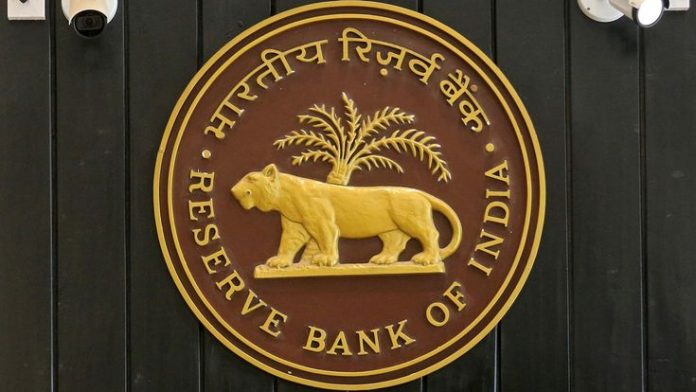Understanding the Reserve Bank of India’s Powers under the Banking Regulation Act, 1949
Introduction
Numerous laws govern banking and these laws radically changed following the Banking Regulation Act of 1949, changes also made by the Industrial Disputes Act, the Companies Act, and the Negotiable Instruments (Amendment) Act (2008), together with court rulings that have guided how bankers behave and interpreted provisions meant to be regulated by the Banking Regulation Act of 1949. Banking is broadly accepted as being a safe industry today, even though systemic shocks continue to occur, while businesses and domestics still continue to borrow with their eyes wide shut.
This blog discusses the sweeping powers given to the RBI to execute provisions of the Banking Regulation Act, together with how they are using those powers, the results of those powers on the banking system, and some recent events which clearly have had an impact on oversight of the Banking Regulation Act.
1 Historical Context of Bank Regulation Act of 1949
The early 1900’s saw the Indian banking system as being in disarray and running on the edge of collapse. As a need for stability, order, consistency and oversight we want the Banking Regulation Act, 1949 to be crafted, designed then legislated. This legislation pertained to Commercial Banks but evolved to include co-operative banks, and regional rural banks as well. Most recently the Banking Regulation Act also temporary provision of digital banking or entities operating as banks.
The Banking Regulation Act, 1949 also complements the Reserve Bank of India Act, 1934 gave the Reserve Bank the powers over the banking system so that they could regulate the banking industry and influence the overall outcomes.
2. Prominent Objectives of the Act
The prominent objectives of the Banking Regulation Act, 1949 are:
- To establish sound banking practices;
- To protect depositors’ interests;
- To regulate the entry, existence, and exit of banks;
- To prevent the occurrence of frauds, misconduct and reckless lending;
- To allow the RBI to act as the central regulator of banks.
3. Powers of the RBI under the Banking Regulation Act, 1949
The Act provides the RBI with a plethora of regulatory, supervisory, and enforcement powers. The powers can broadly be classified in these areas:
A. Licensing of Banks (Section 22)
The RBI has the sole power to issue or cancel a banking licence to banking corporations in India. No banking corporation can begin its operations without obtaining a license from the RBI. Thus, it ensures that only sound banking institutions can operate in India.
B. Regulation of Capital Structure (Section 12)
RBI regulates the paid up capital and the reserves of banking companies. Thus, this allows the RBI to ensure that banks continue to maintain a minimum paid up capital adequacy ratio and a continuing sound balance sheet. Such parameters are necessary to maintain a confidence in depositors and the stability of a complete financial system.
C. Control over Management (Sections 10 & 36AA)
RBI has the power to:
– Approve or disapprove key executive appointments, (CEOs and Directors)
– Appoint individuals not fit and proper persons in management
– Supersede the directors’ decision making authority in certain circumstances to ensure that affairs of the bank are conducted in accordance with the Banks behaving prudently.
The above provides RBI with an opportunity to closely scrutinise and preside over the corporate governance practices of banks.
D. The Power of Inspection (Section 35)
RBI can inspect bank records and books of account at any point in time. The RBI can:
– Issue directions
– Impose corrective measures
– Recommend restructuring or penal measures
The above ensures continuing compliance and provides a deterrent against unchecked mismanagement.
E. The Power to Issue Directions (Section 35A)
One of the most patronising powers available to the RBI, Section 35A enables the issuer to:
– Issue directions in the public interest
– Secure proper management of banking companies
– Prevent the affairs of banks being managed in any way detrimental to depositors
The above section was particularly useful in granting directions for banks to take during the Yes Bank crisis.
F. Control over Operating Framework (Sections 21 and 35B)
RBI regulates the policy of advances which means has an opportunity to set conditions for:
– Lending practices
– Exposure limits
– Priority sector lending
– Risk-weighted assets
This ensures banks act responsibly when lending.
G. Moratorium and Amalgamation (Section 45)
In the event of a bank collapse, the RBI can:
- Impose a moratorium
- Draft schemes for amalgamation or reconstruction
- Merge weak banks with strong banks
They used these powers recently to reconstruct Lakshmi Vilas Bank and Yes Bank.
4. Amendments and expansions of RBI’s powers
In the years, a number of amendments have strengthened the RBI’s powers under the Act:
A. On 25th March 1965
The provisions of the Act were extended to cooperatives banks- this gave the RBI powers for a wider range of banking establishments.
B. The 2019 Amendment
In the aftermath of the crisis at the PMC Bank, the Reserve Bank was given the authority to control the urban cooperative banks with some authority that rested with the state government previously.
C. The Banking Regulation (Amendment) Act, 2020
The authority to restructure cooperative banks, on the lines applicable to commercial banks.
The RBI was provided authority to appoint administrators to cooperatives and supersede the boards.
These amendments are a reflection of the changing banking landscape and the need to keep regulatory frameworks up to date.
5. Case Studies: Practical Applications of RBI’s Powers
A. Yes Bank Crisis (2020)
The Reserve Bank of India (RBI) imposed a 30-day moratorium, capped withdrawals, and let the State Bank of India (SBI) and others engineer a rescue plan, which was a classical illustration of how the RBI exercised its powers under Section 35A and 45.
B. The PMC Bank Scam (2019)
Following a fraud of Rs. 6,500 crore, the RBI superseded the board of directors and limited withdrawals. The crisis resulted in an urgent amendment to the law to provide the RBI with enhanced powers over co-operative banks.
C. Merger of Lakshmi Vilas Bank with DBS India (2020)
The RBI quickly merged Lakshmi Vilas Bank with DBS India under Section 45, preventing depositors from losing money and restricting the systemic impact.
6. Limitations and Critiques
While the RBI is highly empowered, limitations and critiques exist:
✔ Shared powers with government ministries, especially in the case of Public Sector Banks
✔ Limited scope over Non-Banking Financial Companies (NBFCs) and payment banks, allowing regulatory arbitrage
✔ Little independence in politically driven issues
✔ Sometimes, a reactive rather than a proactive supervisory regimen in the case of some crises
However, the current legislative environment is gradually contending with these gaps.
7. Comparative Global Perspective
When compared with the actions taken by other central banks, such as the Federal Reserve (USA), or the Bank of England, the RBI typically has the widest regulatory power. However, with the fragmented structure of our country’s framework, the extent of RBI’s regulatory authority over public, private, and co-operative banks is impacted uniquely and reduces certainty regarding the RBI’s financial supervisory role.
8. Role of the RBI during Financial Crisis and Pandemic
During the COVID-19 pandemic, the RBI, under the powers vested with it by the Act, were able to:
- allow moratoriums on loan repayments,
- revise norms around provisioning, and
- provide liquidity via Targeted Long-Term Repo Operations (TLTROs).
The actions taken by the RBI in the function of a regulator demonstrate that their actions were conscious, intentional, and flexible in the time of crisis.
9. Conclusion: The role of the RBI as a Watchdog and Enabler
The Banking Regulation Act, 1949 allows the RBI to be one of the most important legislative tools for financial oversight of banking in India. The Reserve Bank of India has demonstrated the flexibility, preparedness, and effort to manage complexities that come with the regulatory compliance of all structures, testifying to their role as a regulated financial player.
As the evolved financial system and industry develop into more of a mixed, digitally transformed, international mix, the RBI regulates the threat of evolving digital banks, fintech, and internationalization through a blend of obligatory regulatory power, responsibility to deliver on risk management, mandated governance, and licensing regime while overseeing the autonomy a financial organization holds. Even through times of uncertainty and crisis with the pandemic, the RBI retains autonomy, discretionary authority, but remains accountable on its actions to regulate change.
Also Read:
Rights of undertrial prisoners in India
How To Send A Legal Notice In India




